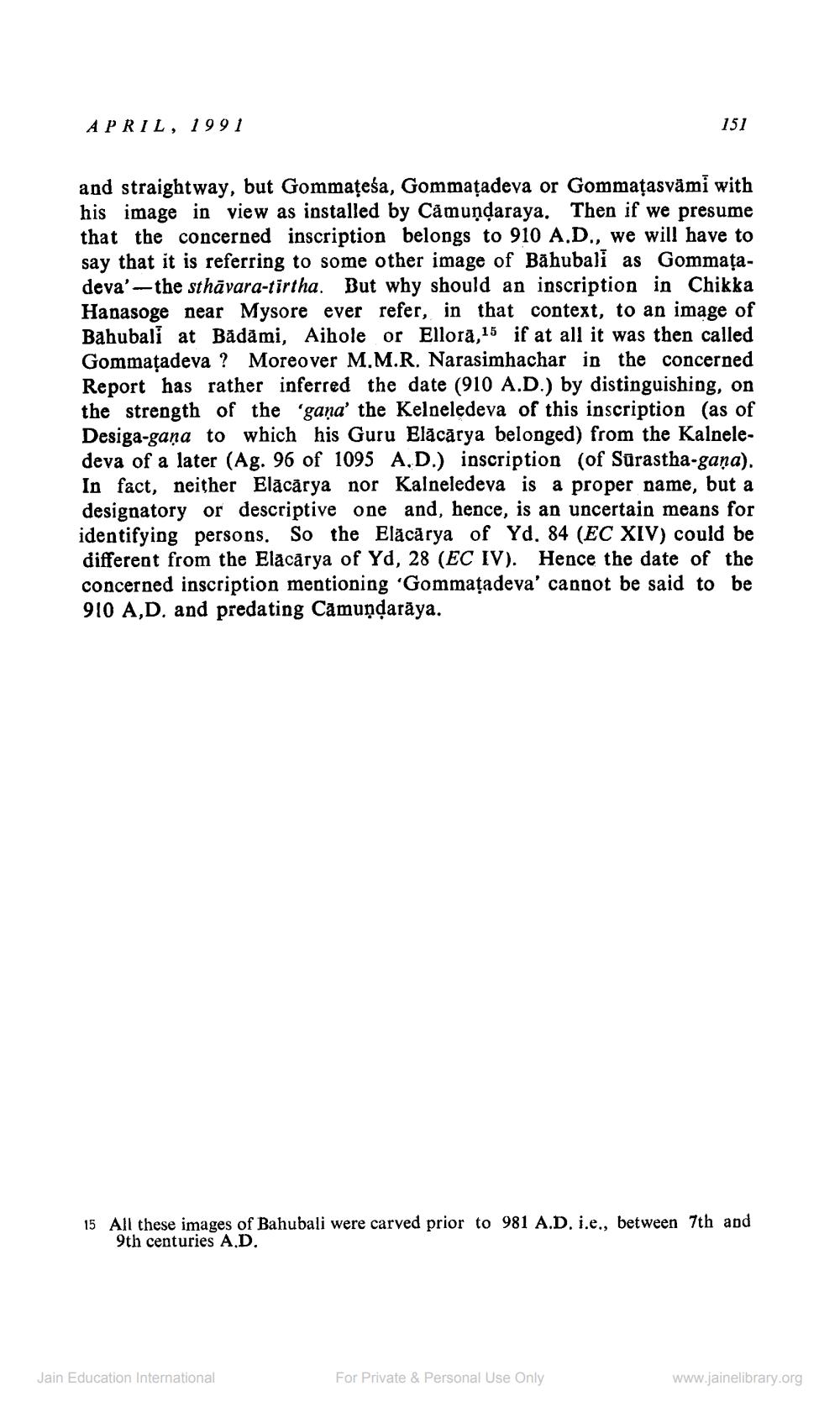Book Title: Jain Journal 1991 04 Author(s): Jain Bhawan Publication Publisher: Jain Bhawan Publication View full book textPage 7
________________ APRIL, 1991 and straightway, but Gommateśa, Gommaṭadeva or Gommaṭasvami with his image in view as installed by Camuṇḍaraya. Then if we presume that the concerned inscription belongs to 910 A.D., we will have to say that it is referring to some other image of Bahubali as Gommațadeva'-the sthāvara-tirtha. But why should an inscription in Chikka Hanasoge near Mysore ever refer, in that context, to an image of Bahubali at Bādāmi, Aihole or Ellora,15 if at all it was then called Gommaţadeva ? Moreover M.M.R. Narasimhachar in the concerned Report has rather inferred the date (910 A.D.) by distinguishing, on the strength of the 'gana' the Kelneledeva of this inscription (as of Desiga-gana to which his Guru Elăcărya belonged) from the Kalneledeva of a later (Ag. 96 of 1095 A.D.) inscription (of Surastha-gaṇa). In fact, neither Elācārya nor Kalneledeva is a proper name, but a designatory or descriptive one and, hence, is an uncertain means for identifying persons. So the Elacarya of Yd. 84 (EC XIV) could be different from the Elacarya of Yd, 28 (EC IV). Hence the date of the concerned inscription mentioning 'Gommaţadeva' cannot be said to be 910 A,D. and predating Camuṇḍarāya. 151 15 All these images of Bahubali were carved prior to 981 A.D. i.e., between 7th and 9th centuries A.D. Jain Education International For Private & Personal Use Only www.jainelibrary.orgPage Navigation
1 ... 5 6 7 8 9 10 11 12 13 14 15 16 17 18 19 20 21 22 23 24 25 26 27 28 29 30 31 32 33 34 35 36 37 38 39 40 41 42 43 44 45 46 47 48 49 50 51 52
